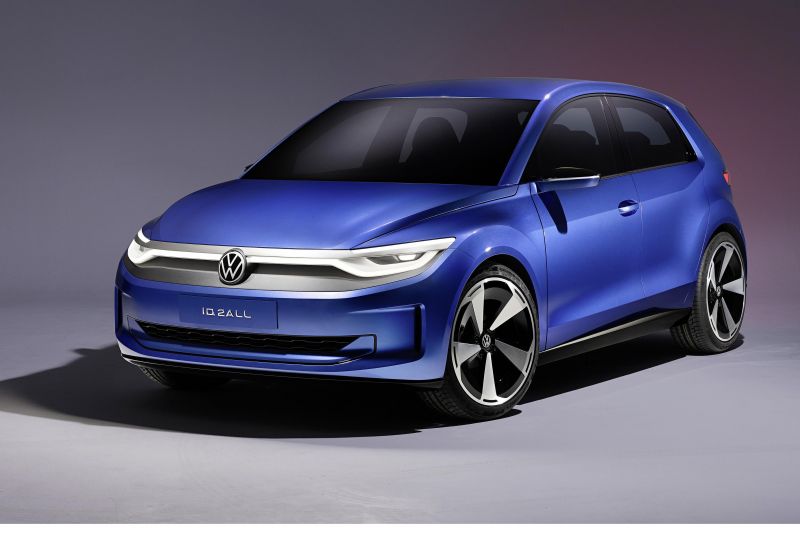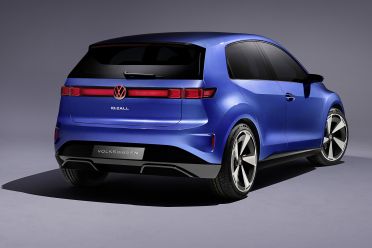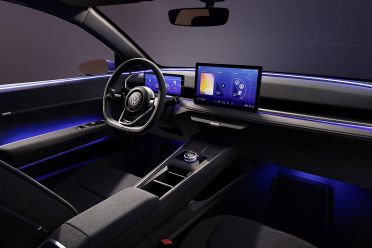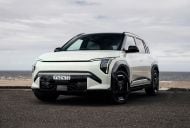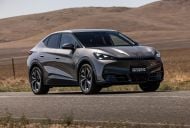Andreas Mindt, design chief for the Volkswagen brand, says the next-generation of electric vehicles (EVs) from the brand won’t try to look like EVs, but just cars without internal combustion engines.
In an interview with Motor Trend, Mindt said, “There was a trend for short hoods and long windshields; everyone believed this should be the design for electric cars, but it is not.”
Although he didn’t try to defend the rounded, cab-forward styling of the ID.3, ID.4, ID.5, and ID.7, Mindt did try to justify it by claiming they were designed to appeal to “early adopters”, even though Volkswagen had talked openly about these vehicles accounting for around 20 to 25 per cent of sales by the middle of the decade.
Mindt believes “you don’t need to convince people” about EVs, and there’s no need for “artificial things” or to “be over-keen”. For future models, Mindt is adamant that Volkswagen will “just make it good, make it fit, and it will work”.
The first hint at the direction Mindt is aiming for with Volkswagen’s next series of electric vehicles was the ID.2all concept, which previews a Polo-sized vehicle, likely badged ID.2.
“I want to get this kind of stance in the whole portfolio,” Mindt says of the ID.2all concept.
In addition to making the exterior of future Volkswagen EVs more appealing, Mindt wants to improve the look and feel of the brand’s interiors.
Under the direction of former Volkswagen Group CEO Ferdinand Piech, Volkswagen pushed itself upmarket with soft-touch plastics, high-quality imitation metal, soft-close handles, and noise-deadening trim.
Recent models have switched the interior emphasis towards high-tech interfaces, which have been let down by sluggish responses, and poor design, such the over-reliance on capacitive buttons and non-illuminated sliders.
Thomas Schäfer, Volkswagen brand CEO, has admitted recent interiors “definitely did a lot of damage” to the brand’s standing among its customers.
Volkswagen’s mission, according to Mindt, is to make “nice cars for nice people”. This mantra is “what we did, and [it’s] what we have to do”.
“This is the secret sauce,” Mindt claims. “The car is better than you expect, and you start to love it. Our aim is to be the love brand.”
Mindt was put in charge of design for the Volkswagen brand in February 2023. He replaced Jozef Kaban, head designer since 2020, whose upcoming designs didn’t sit well with Thomas Schäfer, who became CEO of the Volkswagen brand in the middle of 2022.
Andreas Mindt started at the automaker in 1996 after graduating from the Pforzheim University School of Design, and has spent his entire working life with the firm.
His early credits include the exterior of the first-generation Tiguan, and the seventh-generation Golf. He became Audi’s head of exterior design in 2014.
In 2021 he was promoted to become Bentley’s chief designer, where he was tasked to come up with a new design language for the super-luxury marque as it transitions to becoming an EV-only manufacturer by 2030.
The only Bentley design of Mindt’s that’s seen the light of day so far is the Mulliner Batur coupe, only 18 of which will be built with a starting price of £1.65 million ($2.88 million).
MORE: Volkswagen design chief dumped for Bentley man
MORE: VW CEO — Our cabins “frustrated” owners, “did a lot of damage”


